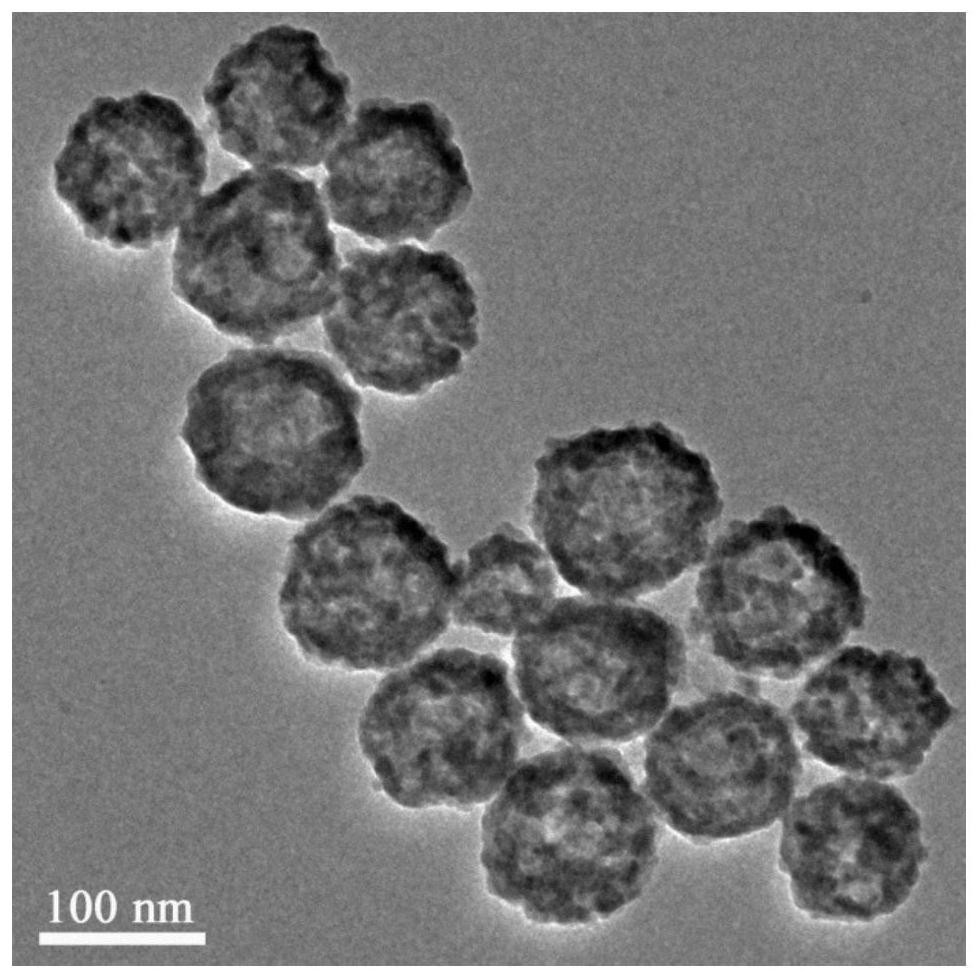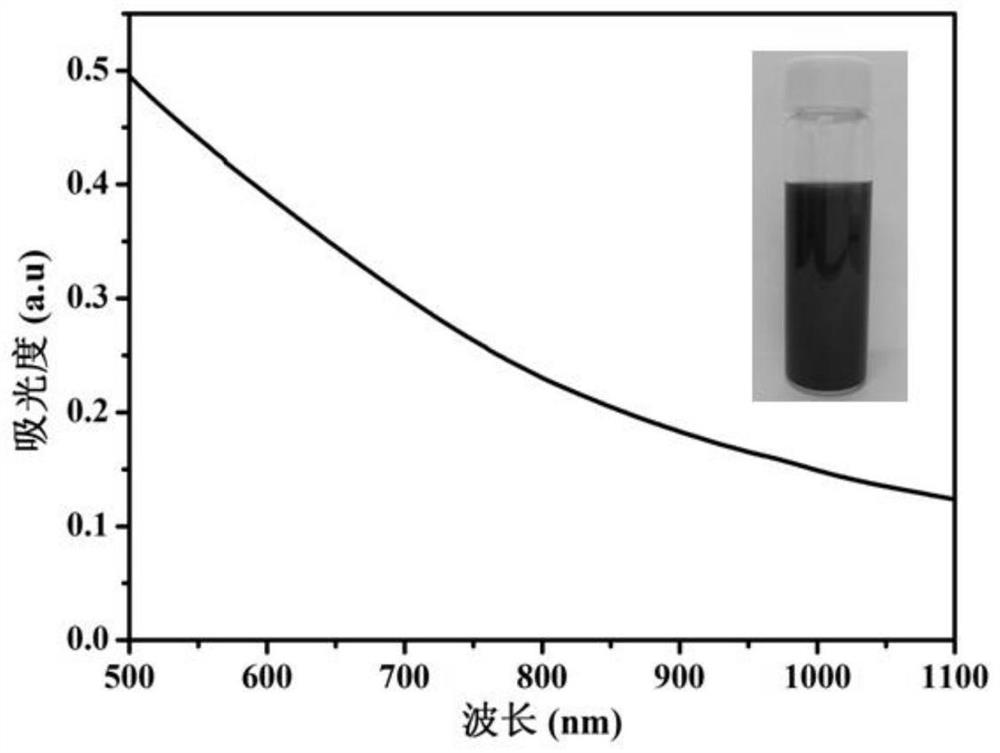A kind of porous bismuth nano microsphere and its preparation method and application
A technology of bismuth nano and microspheres, applied in the field of its preparation, porous bismuth nano microspheres, can solve problems such as long-term high-intensity light, heat shock, etc., to ensure biocompatibility, reduce toxic effects, and improve therapeutic effects Effect
- Summary
- Abstract
- Description
- Claims
- Application Information
AI Technical Summary
Problems solved by technology
Method used
Image
Examples
Embodiment 1
[0056] In this embodiment, porous Bi nanospheres are prepared by the following method, which specifically includes the following steps:
[0057] 1. Disperse 100mg of molybdenum oxide (about 0.7mmol) and 0.4851g of bismuth nitrate pentahydrate (about 1mmol) in a mixed solution composed of 30mL of glycerin and 5mL of ethylene glycol, and then add 0.4998g of polyvinylpyrrolidone K-30 (PVP) , ultrasonically stirred evenly.
[0058] 2. Oil bath, reflux and stir at 200°C under normal pressure for 4 hours, then cool to room temperature, centrifuge at 4000rpm for 4min, remove Bi nano-solid spheres with larger particle size, take the upper layer solution, and centrifuge at 11000rpm for 20min, Take the precipitate. Disperse the precipitate in deionized water, sonicate for 30 minutes, and centrifuge at 11,000 rpm for 20 minutes; take the precipitate and disperse it in absolute ethanol, ultrasonicate for 30 minutes, and centrifuge at 11,000 rpm for 20 minutes; take the precipitate and re...
Embodiment 2
[0067] In this embodiment, the porous Bi nanospheres prepared in Example 1 are investigated by the CCK-8 kit on the viability of HeLa cells and Endothelial (endothelial cells), and the method is as follows:
[0068] 1. Cell culture:
[0069] Inoculate human cervical cancer cells HeLa or endothelial cells to a cell density of 2×10 4 / mL, 200 μL per well in a 96-well plate, placed at 37 °C and 5% CO 2 Concentration of cell culture incubator for 24h.
[0070] 2. Determination of cell viability:
[0071] After 24 hours of attachment, replace the complete medium containing porous Bi nanospheres (from Example 1) with a concentration of 0, 1.25, 2.5, 5, 10, 20, 50, 100, 200 μg / mL, and set 6 in each group. Duplicate wells; after 24 hours of treatment, remove the medium; add 200 μL of CCK solution (diluted with serum-free medium at 1:20) to each well, incubate in a 37°C incubator for 1 hour, and measure the concentration at 450 nm on a microplate reader. For the absorbance value, t...
Embodiment 3
[0074] In the present embodiment, the radiotherapy effect of porous bismuth nano-microspheres is investigated, and the specific methods are as follows:
[0075] 1. Cell culture:
[0076] Inoculate human cervical cancer cells HeLa to a cell density of 2×10 5 Place the cells / well in a 60 mm diameter glass bottom dish at 37 °C and 5% CO 2 Concentration of cell culture incubator for 24h.
[0077] 2. Determination of cell viability:
[0078] After receiving different doses (0 μg / mL, 200 μg / mL) of pBi nanospheres (from Example 1) for incubation, they were treated with different doses (0, 2, 4, 6, 8 Gy) of X-ray irradiation to measure cell survival Measurement results such as Figure 6 As shown, different doses of X-ray irradiation have a significant effect on the viability of HeLa cells. When the same dose of X-rays is irradiated, porous bismuth nanospheres (pBi) significantly enhance the inhibitory effect of X-rays on HeLa cell viability, indicating that porous bismuth nanosphe...
PUM
| Property | Measurement | Unit |
|---|---|---|
| particle diameter | aaaaa | aaaaa |
| pore size | aaaaa | aaaaa |
Abstract
Description
Claims
Application Information
 Login to View More
Login to View More - R&D
- Intellectual Property
- Life Sciences
- Materials
- Tech Scout
- Unparalleled Data Quality
- Higher Quality Content
- 60% Fewer Hallucinations
Browse by: Latest US Patents, China's latest patents, Technical Efficacy Thesaurus, Application Domain, Technology Topic, Popular Technical Reports.
© 2025 PatSnap. All rights reserved.Legal|Privacy policy|Modern Slavery Act Transparency Statement|Sitemap|About US| Contact US: help@patsnap.com



